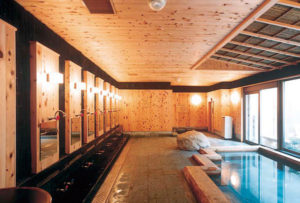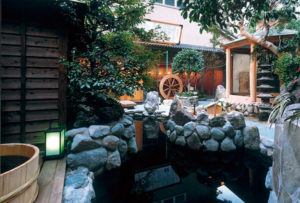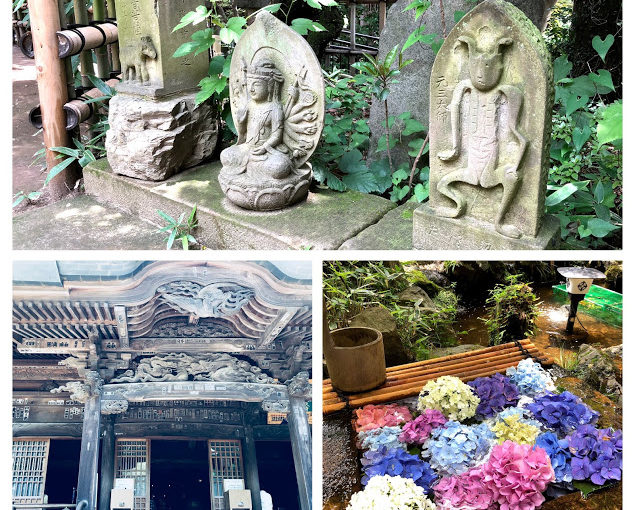If you want to relax slowly in Tokyo sightseeing and want to beautiful flowers and nature, “Jindaiji area” is recommended.
You can reach from Shinjuku within 1 hour, and you can enjoy a vast botanical garden, mysterious temples, a natural hot spring, the townscape as if you had time slip in the Edo period!
In addition, there are more than 20 buckwheat noodle shops in this area and you can eat delicious soba in a store like a scene of SAMURAI movie.
Jindai Botanical Garden 神代植物公園
The Jindai Botanical Gardens are Tokyo Metropolitan Botanic Gardens located in Chofu City, Tokyo, It is the only plant park as Tokyo Metropolitan.
Approximately 4,500 kinds, 100 thousand plants are planted in the park, also known as sightseeing spot of plum and cherry blossoms.
Address: 5-31-10 Jindaiji-motomachi, Chofu-city, Tokyo
Opening Hours: [Sun · Tues – Saturday · Holiday] 9: 30 ~ 17: 00
※ The last entry of this garden is until 16:00
※ The closing time of the aquatic botanical garden is 16:30
Closed: Monday(If Monday is a holiday, next day)
Admission Fee: 500yen
Tel: 042-483-2300
Website: http://www.tamanoya.com/
Access:
From Keio Line
From Chofu Station, get off at “神代植物園前 Jindai Shokubutu Kouen Mae” to Kichijoji Station or Mitaka Station on the Odakyu Bus,
Or get off at “Jindai Botanical Gardens” for Keio Bus to 深大寺 Jindaiji
From Tsutsujigaoka station, get off at “Jindai Botanical Gardens” for Keio Bus to 深大寺 Jindaiji
From JR Chuo Line
From Mitaka Station or Kichijoji Station, Odakyu Bus to 調布駅北口 Chofu Station North Exit or 深大寺 Jindaiji
Get off at “神代植物園前 Jindai Botanical Gardens”
※ The bus ride time is about 20 minutes.
Jindaiji backwheat noodle shop “Tamano-ya” | 深大寺そば 玉乃屋
Personally recommended at Jindaiji area where there are many soba shops is “Tamano-ya”.
This buckwheat store in front of the Jindaiji-temple gate behind the “Jindai Botanical Garden” is as if it appears like a director Kurosawa’s SAMURAI movie in a dim forest.
Tenzaru | 天ざる
Tenzaru is a dish of buckwheat noodles with seewead scattered on and a dish of tempura by 1350 yen.
Address: 5-11-3 Jindaiji-motomachi, Chofu-city, Tokyo
Opening Hours: [Sun · Tues – Saturday · Holiday] 9: 30 ~ 16: 30
Closed: Monday
Tel: 042-485-0303
Website: http://www.tamanoya.com/
Access: 1 min walk from Jindaiji gate of the Jindai Botanical Garden
Jindaiji Temple | 深大寺
The name of “Jindaiji” is said to originate from the water god “Jinja the Great” who was supposed to defend Xuanzangu, a Chinese monk who traveled to India in search of Buddhism.
Tell us that this temple opened up in the Tenpyo 5th year of the Nara period (733 years). In the Heian era in 859, it converts to Tendai sect.
This temple suffered a fire in 1646 and 1865 in the Edo period and lost most of the hall.
The current main hall is the reconstruction of the Taisho era.
The oldest temple in Tokyo is Asakusa in Asakusa, but the second oldest temple in Tokyo is this Jindaiji Temple.
There are many tea shops on the street in front of the temple, you can enjoy Japanese unique sweets such as buns and sauce and Japanese tea.
Jindaiji Hot Spring “Yumori-no-sato” | 深大寺温泉「湯守の里」
Entrance of Jindaiji Hot Spring
Address: 2-12-2 Jindaiji-motomachi, Chofu-city, Tokyo
Opening Hours: 10: 00 ~ 22: 00
※However, there may be temporary closure due to maintenance
Admission Fee:
1200 yen (There is no time limit, towel set · wears in the hall)
900 yen (Within 1 hour, no towel set · no wears in the hall)
Tel: 042-499-7777
Website: http://www.yumorinosato.com/
Access: 5 minutes on foot from Jindai Temple


The ingredient of this hot spring is sodium, the same concentration as the salt concentration of the human body.
Therefore, the burden when entering a hot spring is very few, it is a gentle hot spring.
The black hot water contains plenty of organic substances called “humic acid” in which plants such as kelp and ferns are matured, which are contained in the 1500 m underground layer.
Normal hot springs begin to degrade as soon as they enter the air.
This hot spring is suppressed from deterioration by the power of “humic acid”, and it has become plentiful mineral.
This “humic acid” also has the power to decompose toxins.
